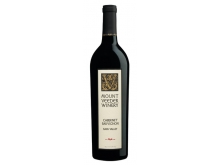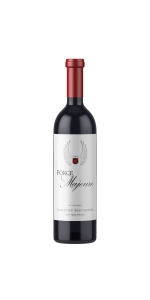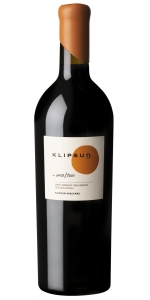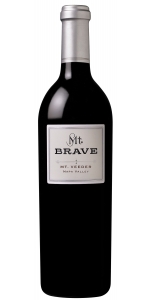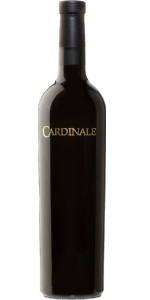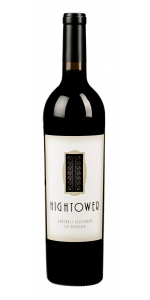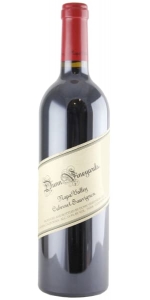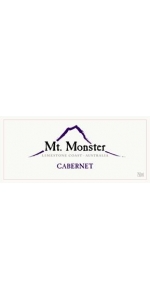Mount Veeder Winery Cabernet Sauvignon 2019
| Country: | United States |
| Regions: | California California (Napa) |
| Winery: | Mount Veeder |
| Grape Type: | Cabernet Sauvignon |
| Vintage: | 2019 |
| Bottle Size: | 750 ml |
Force Majeure Cabernet Sauvignon Red Mountain is made from 100 percent Cabernet Sauvignon.
The estate Cabernet Sauvignon is grown primarily along the southwest ridge of the vineyard. The vines produce small berries with bountiful flavor, concentration and intensity, but also a good degree of finesse, excellent structure and layers of complexity that will continue to develop during extended bottle aging for those who want to cellar and age their wines. The wine is powerful, elegant, full-bodied.
Bottled unfined and unfiltered.100% free run
Pumpovers and punch-downs, up to 45 day macerations
Native yeast, 5 day cold soaks
22 months in 75% new French oak barrels
Fermented in concrete and stainless closed top tanks.
Review:
Another gem is the 2019 Cabernet Sauvignon Red Mountain Estate, a deep, concentrated, powerful Red Mountain Cabernet Sauvignon that I suspect will be up there with the legendary wines from this terroir. Beautiful cassis, graphite, lead pencil shavings, and damp earth notes give way to a full-bodied effort that has a liqueur of rocks-like minerality, flawless balance, building yet polished tannins, and a great finish. Hide bottles for 4-5 years, and it will evolve for 25-30 years if properly stored. Best After 2026.
-Jeb Dunnuck 98+ Points
Klipsun Cabernet Sauvignon Red Mountain is made from 86% Cabernet Sauvignon, 7% Merlot, 7% Syrah.
Fruit aroma of blackberry, mulberry and boysenberry, interlaced with a spicy oak note. As the wine ages in the bottle the oak and fruit aromas will meld into a complex medley of cedar and cigar box. Rich blackberry and a hint of wild sage normally found. Pleasant acidity and a rich, balanced mouthfeel followed by a well-developed mid palate. The result is a tannin structure that is evident but seamless. The finish is smooth and lingering.
Review:
Blended with 7% Merlot and 7% Syrah, the 2019 Cabernet Sauvignon Red Mountain starts with a bold, generous and dark-fruited nose with a rich and robust expression that boasts a seductive oaky essence. Full-bodied, the palate is still tight and will benefit from additional aging in bottle, yet I can see it has good bones now that will allow it to age gracefully for about two decades. Gobs of dark red and black fruits sway with a delightful mineral tension before concluding with a long, winding and spicy finish. The wine rested for 20 months in all new French oak before being bottled and left to rest for more than a year prior to release.
-Wine Advocate 95 Points
Mt. Brave Cabernet Sauvignon is made from 90% Cabernet Sauvignon, 4% Merlot, 3% Cabernet Franc, 2% Petit Verdot, 1% Malbec
Grown on the rocky slopes of Mt. Veeder, the 2019 Cabernet shows notes of black cherry, blueberry, and Asian spice. On the palate, the wine has a profound density of fruit that is structured by fine tannins while the perfectly balanced acidity elongates a long savory finish.
Review:
The 2019 Cabernet Sauvignon is a classic Mount Veeder wine loaded with strong savory and mineral accents. Black fruit, graphite menthol and licorice lend complexity to this huge, explosive Cabernet Sauvignon. The tannins are pretty fierce at this stage, so readers should plan on being patient.
-Jeb Dunnuck 97 Points
Cardinale Napa Valley Cabernet Sauvignon is made from 91% Cabernet Sauvignon, 9% Merlot.
Super structured and with minerality to spare, this Cabernet Sauvignon offers a real presence on the palate from start to finish. Generous notes of dark chocolate balance beautifully with a blue and black fruit flavor explosion, finishing with a subtle whisper of rose petal.
Reviews:
- James Suckling 98 Points
-Jeb Dunnuck 98+ Points
Hightower Cabernet Sauvignon Red Mountain is made from 94% Cabernet Sauvignon, 6% Petit Verdot.
As Hightower Cellars' signature wine, Cabernet Sauvignon is a classic Red Mountain wine – bold and full of the flavors that make this region so special. As much as possible, Tim and Kelly Hightower take a non-interventionist approach to winemaking. They place great emphasis on vineyard selection, picking, pressing, and blending so that Hightower wines are naturally beautiful and free from pretense. They let the powerful and concentrated fruit from Red Mountain speak for itself. The result is a collection of well-balanced, nuanced wines that reveal something new and interesting each time you open a bottle.
Aromas of tart blueberry and lush red cherry dominate the nose, while firm tannins and full body lend structure to this inky, pigmented wine. The palate features notes of dark fruit, fresh cut wood, and dried tobacco. This wine is an excellent candidate for decanting, as the aromas evolve wonderfully over time to express softer, lush fruit and hints of herbs and spices.
Red Mountain AVA 100% (Hightower Estate Vineyard 56%, E&E Shaw Vineyard 44%)
New Oak 71%, Neutral Oak 29% (American 67%, French 11%, European 11%, Hungarian 11%)
Un-fined and un-filtered
Pairs with grilled red meat, fig and olive tapenade, bacon wrapped dates.
Review:
"Notes of spiced red and black fruit with sweet tobacco and wet earth. Medium-bodied, juicy and fruit-forward with crunchy tannins and chalky tannins. Flavorful dark-fruited finish. Drink now."
- James Suckling (May 2023, 91 pts
Dunn Vineyards Napa Valley Cabernet Sauvignon is made from 100 percent Cabernet.
This Napa Valley wine is a blend of their Howell Mountain fruit and a small quantity of valley floor fruit that they purchase. This valley floor fruit contributes to the wine’s earlier approachability and softer tannic structure.
Review:
I loved the 2019 Cabernet Sauvignon Napa Valley, which I think is a step up over the 2018, although both 2019s show a much more elegant profile. Ripe currants, plums, roasted herbs, violets, and incense notes all shine in this medium to full-bodied, ripe, supple, layered beauty, which has fine tannins and a gorgeous finish. Enjoy bottles any time over the coming 15 years.
-Jeb Dunnuck 94 Points
Mount Veeder Winery Cabernet Sauvignon is made from 85% Cabernet Sauvignon, 12% Merlot, 2% Malbec, 1% Cabernet Franc.
The 2019 Mount Veeder Winery Cabernet Sauvignon is a deep ruby color. Aromas of black plum, blackberry, fig and ripe cherry, framed by toasted oak and caramel. A hint of dried herb and floral notes. The concentrated fruit flavors and integrated tannins introduce a rich, full-body structure. Sweet fruit is balanced with acidity and savory notes of leather and wet stone, ending with a lengthy finish of dark berry, baking spice, and mocha.
Review:
Ripe and fresh, with sassafras, sweet bay leaf and savory details that lead into a juicy, compact core of cassis and dark plum compote flavors. The modestly toasty finish lets the fruit and savory sides play out, while acidity and tannins underscore everything. Drink now through 2032. 30,455 cases made. — JM
-Wine Spectator 92 Points
Dark and juicy, with ripe plum, black raspberry, and spice; lush and dense yet elegant
-Tasting Panel 93 Points
Resembling a giant staircase, Mount Veeder's vines are planted on wide terraces of earth cut into steep slopes. At elevations of 1,000 to 1,600 feet, the microclimate is very different from the Napa Valley floor. Above the fog bank, exposed to the gentle morning sun and protected from the afternoon heat by the surrounding mountains, grapes on these vines ripen slowly and evenly. And in autumn, the mountain's cool days and warm nights mean extra hang time.
Our three ranches on Mount Veeder bask in the clear mountain sunshine high above Napa Valley. Estate ranches range in altitude from 1,000 to 1,600 feet in elevation to provide diverse microclimates for a wide variety of growing conditions and fruit profiles. All of the key Bordeaux grapes prosper, keeping with the tradition of being the first vineyard in California planted to all five Bordeaux varieties.
Michael and Arlene Bernstein were the first to plant grapevines on Mount Veeder in 1970. When 59 of their original Cabernet cuttings took root and flourished, they knew they were on to something. Encouraged by their friend and Napa legend Robert Mondavi, the Bernsteins established the first winery on Mount Veeder.
At the time, the Mount Veeder AVA did not exist. Undaunted, Michael and Arlene became the driving force behind its establishment. They later made history as the first vintners in Napa Valley to plant Petit Verdot, and the first to plant all five of the classic Bordeaux varieties on the same property.
Today, Mount Veeder Winery has three vineyard ranches nestled high in the Mayacamas Mountains, producing powerfully flavorful, concentrated wines that express their unique mountain terroir.
The goal at Mount Veeder Winery is to foster the natural balance of the vine and preserve the integrity of the land with a dedication to crafting wines that are the purest expression of this ruggedly beautiful site. Respecting the land and cultivating grapevines on Mount Veeder isn’t a simple task. The challenge lies in the ability not only to produce great wines, but also to improve the sustainability of the vineyards, prevent erosion, improve the quality of the runoff water, allow the deer and wildlife a place to live, and have the vineyard live in harmony with nature.
Many steps are taken in order to accomplish these goals, including a strict attention to erosion control. Following the contours of the land, the vines cannot be planted in long, straight rows; instead, the rows are laid out in shorter, curving pieces. Top soil is shallow and precious, so installation of extensive drainage systems is essential to protect against soil erosion. Water collector basins are created along the inside of the terraces, emptying into underground drainage pipes that run through the vineyards.
A cover crop of grasses and clover plus an organic mix of legumes that fix nitrogen levels and add organic matter back into the soil restore nutrients and help to control erosion. Organic composts also help maintain the vines’ nutritional balance. Compost is spread in the fall so that soil microbes and nutrients can penetrate the soil with the winter rains.
Mt Monster Cabernet Sauvignon is 100 percent Cabernet
Winemaking: Our Cabernet is fermeneted in static fermenters at controlled temperatures to retain the varietal aromatics. Once complete the wine is left for 7-1- days on skins to aide in the extraction of soft fleshy tannins and build wine structure. French and American oak has been used sparingly to ensure maximum fruit expression is retained in the final wine.
Tasting notes: Deep purple in colour. Classic aromas of lifted blackcurrant, blackberry and mint on the nose. Flavours follow through of sweet berry-fruit accented by fresh muddled mint. Elegant, structured palate with big velvety tannins.
- back
Rubus Special Edition Barossa Shiraz is made from 100 percent
The Rubus Project was created by Fran Kysela as a way to source & sell incredible wines at value prices. All wines in this international project are hand-selected by Fran Kysela. Rubus wines are fruit driven, true-to-type values that over deliver - a true representation of quality for the consumer at an excellent price.
Deep red with a slight purple hue on release. The wine has a rich mix of dark chocolate infused with coffee bean and black liquorice, then scents of tar, aniseed, raw (pure) soy and black olive on the nose. The palate is expansive, and yet balanced and finessed. An amalgam of dark berried flavors and textural sensations. The 100% new oak is completely absorbed, meshed with ripe tannins, completing a palate of impressive length and youthfulness.
Sourced from Thorn-Clarke’s St Kitts vineyard (Block 7) in the far north of the Barossa, the Rubus Reserve demonstrates both the strengths of the region and the unique characters of the vineyard.
A thin layer of topsoil over weathered marble, schist and shale mean the vines work hard to source water and nutrients. The result is naturally low yields concentrating the power and density of the fruit. Diurnal temperature variation is another important aspect of St. Kitts. Warm daytime temperatures are followed by cool nights with variations of up to 30°C (55°F) from the peak during the day into the cool night minimums.
Review:
“Earthy detail develops in this sleek and juicy shiraz, a tarry streak under fresh plum and bruised strawberry. The tannins have gravity and precision, their bracing intensity and concentration integrated into what panelist David Hawkins described as “a big, powerful wine with great liveliness.” While suited to aging, this is accessible now if you’re grilling meats to serve with it.”
- Wine & Spirits (February 2023), 94 pts
"Made by Thorn-Clarke for the US market, this has a rich and vivid nose with blueberry, violet, dark plum and subtle oak spice in play. The palate has a succulent feel with plenty of rich, open-knit blackberry and blueberry flavor. Smoothly delivered tannins carry long and even. Drink over the next decade."
- James Suckling (November 2021), 94 pts
Turley Pesenti Zinfandel is made from 100 percent Zinfandel.
This certified organic estate-owned vineyard was planted in the 1920s on primarily limestone soil. Though the vines are head-trained and dry-farmed, the soil plays the most important role in distinguishing this vineyard on the west side of Paso Robles. The wines have a brightness, with chalk and floral characteristic aromas unique to the site, and to Zinfandel in general.
Review:
Dark and brambly, with brooding plum and blackberry flavors accented by licorice, clove and smoked pepper tones as this builds grip toward medium-grained tannins. Drink now through 2035. 2,387 cases made.
-Wine Spectator 93 Points

